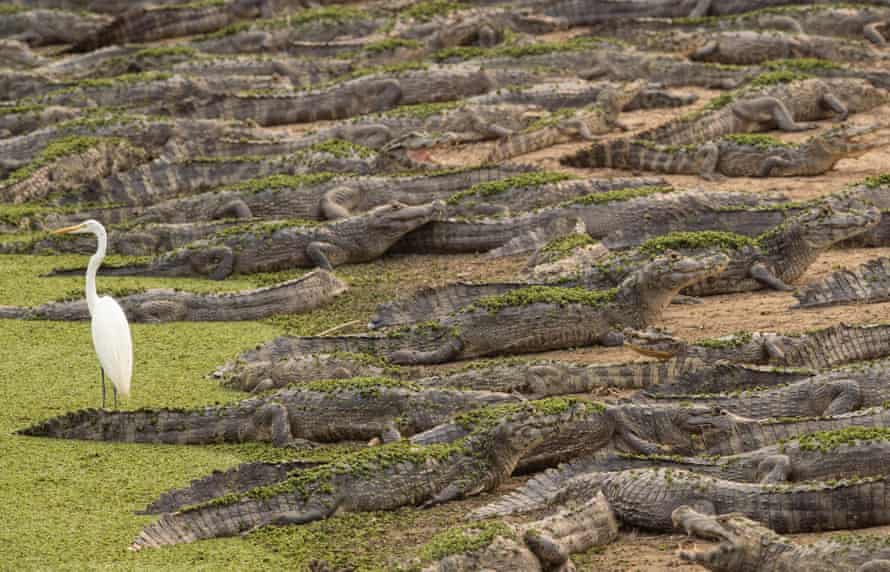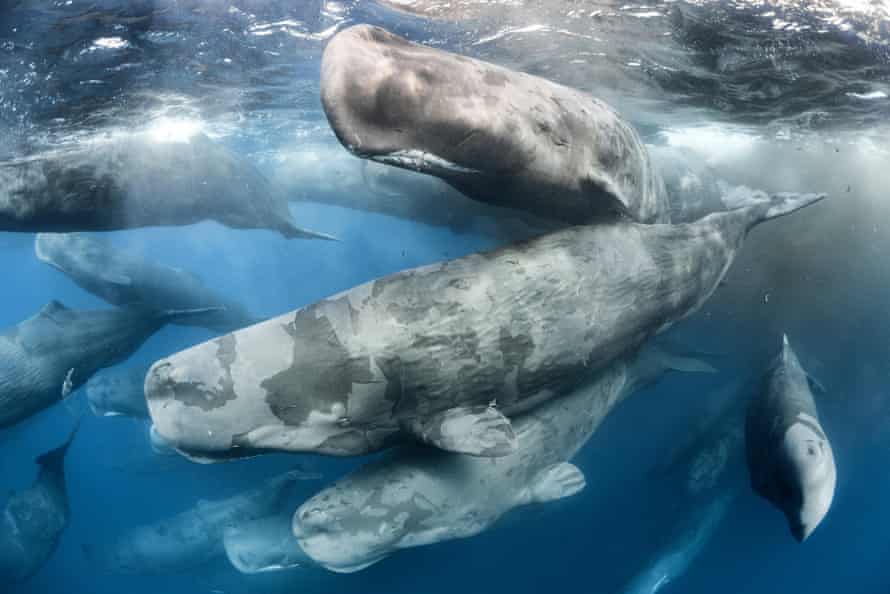In 1996, Prof Shahid Naeem was part of a team of researchers who set out to value the Earth. Specifically, they were trying to establish the dollar value of all of the “ecosystem services” the planet provides to humans every year. Around $33tn, they concluded, nearly double global GDP at the time.
“The team was half ecologists and half economists. The ecologists found the exercise really scary but understood the utility of it. The economists felt nature could be valued but they disagreed about how it could be done,” Naeem says.
The financial value of ecosystem services is at the heart of much of 21st century conservation, increasingly guiding economic decision-making and government policy. It is on the agenda at Davos this week in discussions about protecting the Amazon and the post-Covid economic recovery, and is likely to be a central issue in UN discussions on a Paris-style agreement on biodiversity to be negotiated in Kunming, China, later this year.
Q&AWhat is the road to Kunming series?Show
We will be running a series of occasional articles looking at the key issues and people involved at the COP15 of the UN Convention on Biological Diversity scheduled to be held in Kunming, China, in 2021. The meeting will bring together governments from around the world to sign up to a Paris-style agreement on biodiversity that sets goals for the next decade.
More than half of global GDP – $42tn (GBP32tn) – depends on high-functioning biodiversity, according to the insurance firm Swiss Re. The “natural capital” that sustains human life looks set to become a trillion dollar asset class: the cooling effect of forests, the flood prevention characteristics of wetlands and the food production abilities of oceans understood as services with a defined financial value. Animals, too.
The services of forest elephants are worth $1.75m for each animal, the International Monetary Fund’s Ralph Chamihas estimated; more than the $40,000 a poacher might get for shooting the mammal for ivory. Whales are worth slightly more at over $2m, he also estimates, due to their “startling” carbon capture potential, and therefore deserve better protection.
It is a highly controversial way of thinking about nature and Naeem, a professor of ecology at Columbia University, often relies on humour to explain it. It doesn’t mean that fungi are about to unionise and charge humans for decomposition services, he assures me. Although, if they did, it would get expensive. We would be in even bigger trouble if the trees started to charge us for oxygen. Really, he says, ecosystem services are meant to help us understand that plants, animals and intact ecosystems are worth more to humans alive than dead.
“You have to realise that people will value ecosystem services whether we like it or not. They’ll say: ‘If we change the Pantanal in Brazil [the world’s largest tropical wetland] for cattle, this is how much money we’ll make.’ Our job is to explain that’s not actually how you do it. You have to include all these other things the Pantanal does, not just the production of beef,” he says, speaking ahead of a Global Landscapes Forum event last October.
Some environmentalists wince at the financial characterisation of the natural world, disputing an anthropocentric understanding of ecosystems and organisms as capital that derive value from how well they “serve” humanity. Guardian writer George Monbiot calls the approach “morally wrong, intellectually vacuous, emotionally alienating and self-defeating”. Others dislike the seductive logic of including the environmental damage of eating a beef burger or driving a petrol car in their “true” costs, deforestation and melting glaciers included.

But the capitalisation of nature in the public and private sectors is not going away. Larry Fink, CEO of BlackRock, the largest asset manager in the world, warned investors at the start of 2020 that markets are at “the edge of a fundamental reshaping of finance” defined by the climate crisis and the environment, a change he points out in his 2021 message that is happening quicker than expected. Wealthy nations could pay biodiverse countries billions of pounds for the environmental services of the Amazon, the Galapagos islands and other life-sustaining ecosystems as part of the anticipated Kunming agreement. The Dasgupta review, a comprehensive assessment on the economics of biodiversity commissioned by the UK government, is due to be published shortly, making the monetary case for action on the environment.
Yet the questions of what is the right price for nature, whether an ecosystem can be accurately represented by financial models and how the metrics can be integrated into existing markets remain unanswered.
Putting a price on nature
Carbon markets are the most prominent example of the inclusion of nature in finance. Although market designs vary, it is hoped that greenhouse gas emissions will fall as carbon prices and demand for offsets rise, ensuring that polluters pay the “true” cost of burning fossil fuels and other GHG generating activities. In time, a large part of the world’s forests, peatlands and soils could become valuable natural capital assets for their carbon sequestration properties. Former Bank of England governor Mark Carney has said the global voluntary offset market must grow to $100bn a year to help the world reach net zero targets.

Few have played a more influential role than Carney in the slow environmental awakening of the City of London and Wall Street. Now a UN special climate envoy for Cop26 in Glasgow, he has called for executive pay for top bankers to be linked to the goals of the Paris agreement. His taskforce on the mandatory disclosure of climate risks for business and investors, launched with Michael Bloomberg in 2015, could form the basis of environmental regulations in major markets. But Carney is clear that action on the climate is as much about preventing a financial crisis as protecting the planet.
“If some companies and industries fail to adjust to this new world, they will fail to exist,” he wrote in the Guardian in April 2019.
The Wall Street Journal estimates that in 2020 oil and gas companies in North America and Europe wrote down roughly $145bn in assets. Lower oil prices simply made many planned projects from the Arctic to Brazil financially unviable – “stranded assets” that have no place in a low carbon future. The demise of the fossil fuels sector, which once boasted some of the most valuable companies, has happened without effective carbon pricing and environmental regulation.
“I’m done with fossil fuels. They’re done,” CNBC pundit Jim Cramer, host of Mad Money, told his viewers in February last year. More writedowns are expected, especially after Cop26, where the UK hopes countries will make big commitments on finance and the climate crisis.
Yet there remain huge challenges beyond the simple carbon in, carbon out logic of creating more sustainable financial institutions for the climate. Katie Kedward and Josh Ryan-Collins, economists at University College London’s Institute of Innovation and Public Purpose, argue that calculations of existing climate-related financial risks are likely to be large underestimates without the inclusion of nature. Then there is the question of whether the complexities of an ecosystem or the true economic cost of destroying it can ever be represented accurately by a financial model.

What are the economic consequences of the complete deforestation of the Amazon rainforest, the global eradication of insects or the total desertification of the Mediterranean region? GBP100bn? GBP4tn? Are these meaningful numbers? Who pays for it? Will we be able to follow the lead of climate litigation and sue for the destruction of nature?
These are questions being posed by a growing number of financiers, including Sylvain Vanston, head of Climate Change and Biodiversity for the French insurer Axa. In recent years, warnings from scientists about mass extinctions and ecosystem breakdowns have been accompanied by stark warnings for banks and investors. In its Global Risks Report 2021, the World Economic Forum rated biodiversity loss as the fourth most impactful and fifth most likely risk in the years ahead.
“When you start looking into biodiversity loss, you worry even more than when you look at climate change,” Vanston says.
In September, Axa announced a partnership with Iceberg Data Lab to develop the first set of tools that investors can use to measure risks to biodiversity and nature through their activities. Using geotagging and mean species abundance – a proxy for how alive somewhere is – Vanston hopes the tool will help financiers identify activities that damage the environment and better understand company-specific risks.
“From a business standpoint, a dead tree is worth more than an alive tree. Exploiting and destroying nature makes you reap more immediate benefits than protecting it. But when nature collapses, entire regions and entire sectors might become stranded,” Vanston says.

“We’ve seen many reports about the state of nature. But what we were missing is this piece of the puzzle: how to tie degradation of nature to specific companies, and then to sectors, and then to portfolios. If we cannot connect them there’s really not much we can do. So hopefully, over the next three years, we’ll refine this approach.”
In time, similar metrics could be developed and mandated by government, from investment banking to bond markets, forcing nature to be included in every major financial decision.
Impact on human wellbeing
In 2014, researchers led by the ecological economist Robert Costanza updated the 1997 valuation of the Earth’s ecosystem services. It was estimated they were now worth $125tn a year. But the study found that land change use had resulted in an annual loss of between $4.3tn and $20.2tn between 1997 and 2011. The team also said that giving nature an economic value did not mean it should be treated as a private commodity but help communicate its value to society.
Naeem, who was not part of the second study, believes the biggest barrier to integrating ecosystem services into financial decisions is the lack of studies that connect ecosystem function with human wellbeing. Scientists understand how the ecosystems work and the financial outputs they produce – such as the value of timber – but the two are rarely translated into impacts on human wellbeing.
“Underpinning all this discussion about ecosystem services is something that is actually quite beautiful. It’s a beautiful science but it’s not being executed very well. I think neither the economics or the ecology are being very well done. But if you can do it, oh my God, you can make a change,” he says, as he references a 2016 paper by University of Antwerp researcher Annelies Boerema on whether ecosystem services were being adequately valued.

The Nature Conservancy estimates that the world needs to spend $722-967bn a year to halt the collapse of ecosystems and mass extinctions by 2030. But even if ecosystem services are not fully integrated into our way of life, far less money could have a major effect on biodiversity. In a report last October, the consulting firm McKinsey calculated that the estimated $24bn – about 40% of global ice-cream sales – that is now spent on protecting areas for conservation could have enormous benefits if scaled up for the public and private sectors.
“An early and classic example of the monetisation of ecosystem services is New York City in the early 90s. It was at the crossroads of either building this huge water filtration plant that, I think, would cost something like $5bn in today’s dollars to build and then a quarter billion dollars annually to maintain. The other option was to work with local farmers in the watershed area further north and pay them to better conserve the land to improve water quality. They went for that second option,” says Duko Hopman, associate partner at McKinsey & Company.
“And to this day, that is the way that New Yorkers drink their water. And it turned out to be so much cheaper than the alternative.”
Find more age of extinction coverage here, and follow biodiversity reporters Phoebe Weston and Patrick Greenfield on Twitter for all the latest news and features